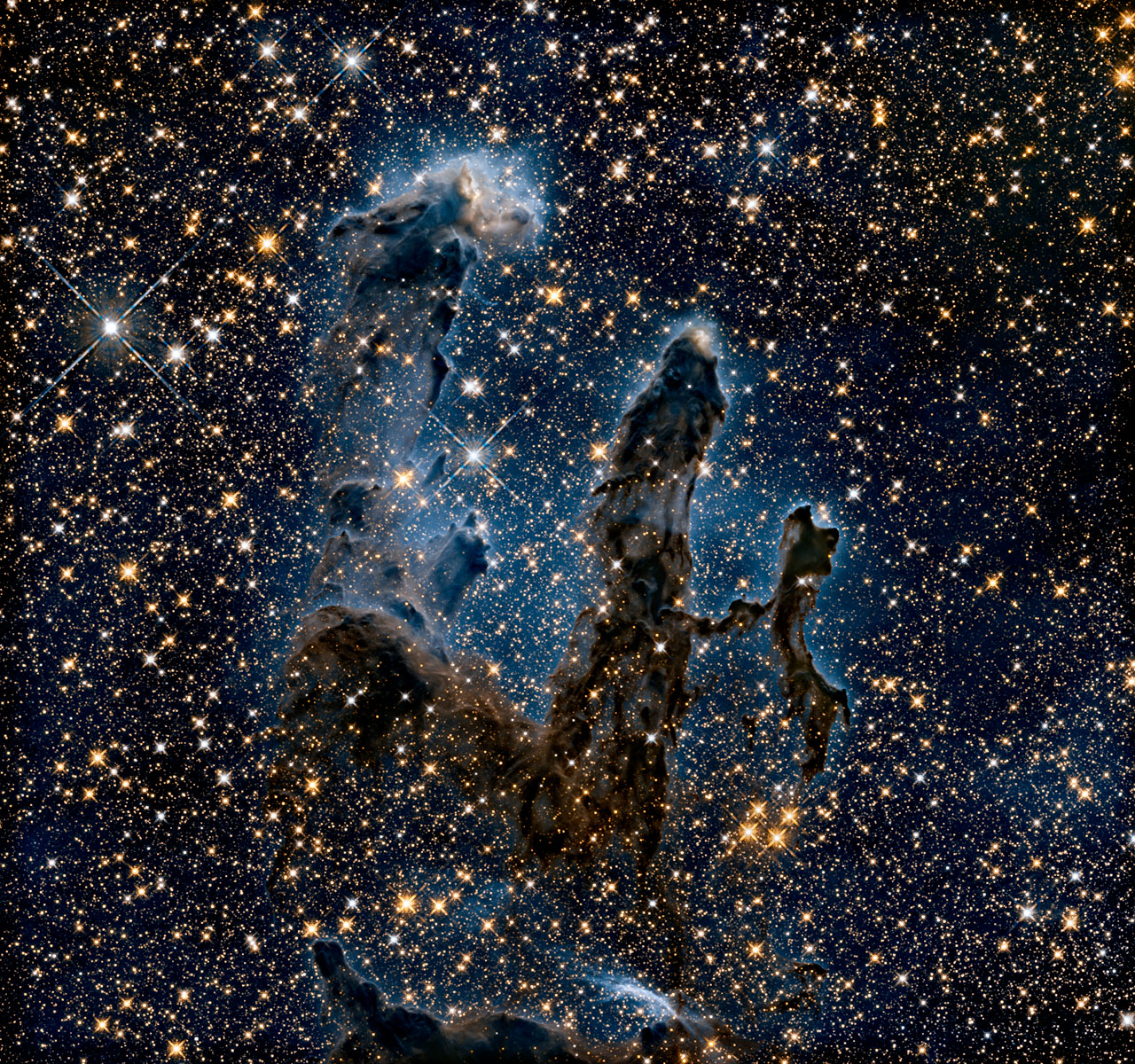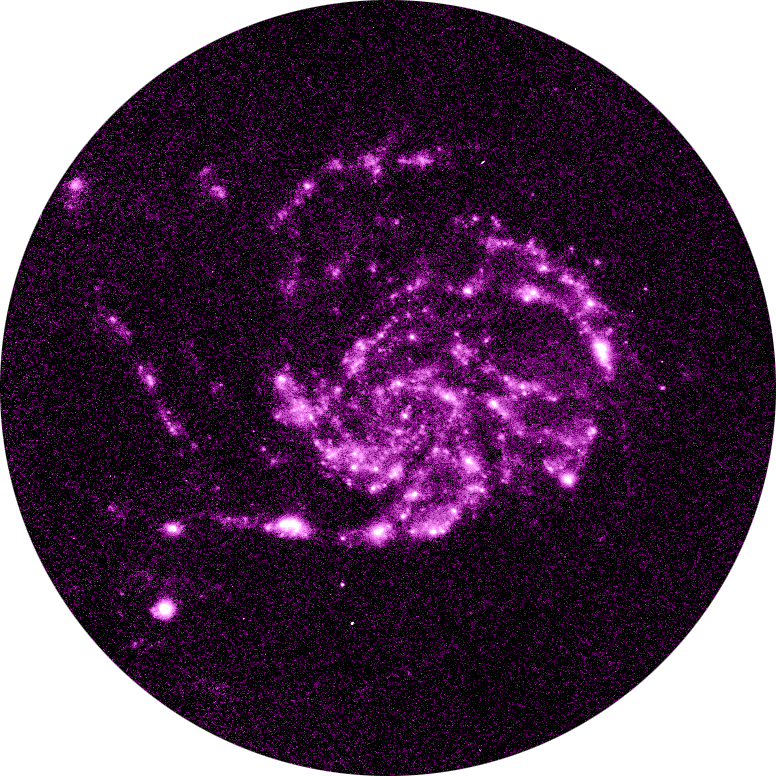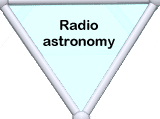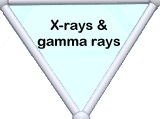Windows of Astronomy |
||
UV and infrared Both ultraviolet (UV) and infrared (IR) were discovered in sunlight early in the 19th century but they were not seen as part of a spectrum of radiation. It wasn’t until the mid-1860s that James Clerk Maxwell deduced the existence of electromagnetic waves and immediately recognised light and radiant heat as electromagnetic. Infrared came to be called ‘dark light’ by contemporaries. UV is equally invisible to us but it was still decades before the ‘electromagnetic spectrum’ would become a familiar concept. Fortunately for us, UV is mainly absorbed by the atmosphere. The UV that isn’t absorbed is strongly scattered so looking though the atmosphere in UV is like looking through frosted glass. UV astronomy had to wait for the space age. Stars hotter than 8000 degrees emit the peak of their radiation in the UV. UV images of galaxies pick out the high-mass, fast-burning hot stars, highlighting the location of relatively recent star formation. In order for us to see anything, images have to be rendered in false colour. Blue or purple is a common choice.
|
The spiral ‘pinwheel’ galaxy (M101), 21 million light years distant, imaged in UV. Courtesy NASA. |
|
The Sun has been imaged in UV continuously for decades now. Different false colours are used for different wavelengths, selected by filters. These are typically centred on the emissions of highly ionized iron atoms. The result is to select regions in the Sun with different degrees of energetic activity, showing that the Sun has a far more varied appearance than it seems to in visible light. The features both rotate with the Sun and develop or fade as they evolve. Most activity is associated with the very variable magnetic field that bursts out from the Sun’s surface.
|
Solar Dynamics Observatory image taken in extreme ultraviolet at 30.4 nm wavelength of the Sun in a very active phase. Courtesy NASA/SDO. |
|
In hindsight, infrared astronomy could have been developed much further in the 19th century but in fact it has largely evolved since mid 20th century. ‘Near infrared’ can use variants of optical technology but ‘far infrared’ extends into the realm of THz radio technology. The atmosphere has regions of absorption and transparency to IR but it also emits its own IR by virtue of its temperature, so high altitudes or space are the appropriate places for IR telescopes. Infrared astronomy is the flavour of the times as I’m writing, so much so that the successor to the Hubble Space Telescope (which includes a dozen separate instruments spanning the near IR, visible and UV) will be an infrared instrument. Infrared shows up the radiation from astronomically cool objects. This includes huge gas clouds from which stars are born, stars much cooler than our Sun (of which there are many) and even planets. In the infrared, hot stars outshine cool bodies by far less than they do in visible light. Very distant bodies in the universe, and hence bodies created in the early universe, have their light red-shifted into the infrared. Infrared astronomy is an essential tool for studying the early universe and hence fleshing out detail on the creation story of the universe as we see it. |
 The famous ‘pillars of creation’ seen by the Hubble Space Telescope in infrared, revealing stars forming within the pillars and beyond them. Courtesy NASA. The famous ‘pillars of creation’ seen by the Hubble Space Telescope in infrared, revealing stars forming within the pillars and beyond them. Courtesy NASA. |
|



